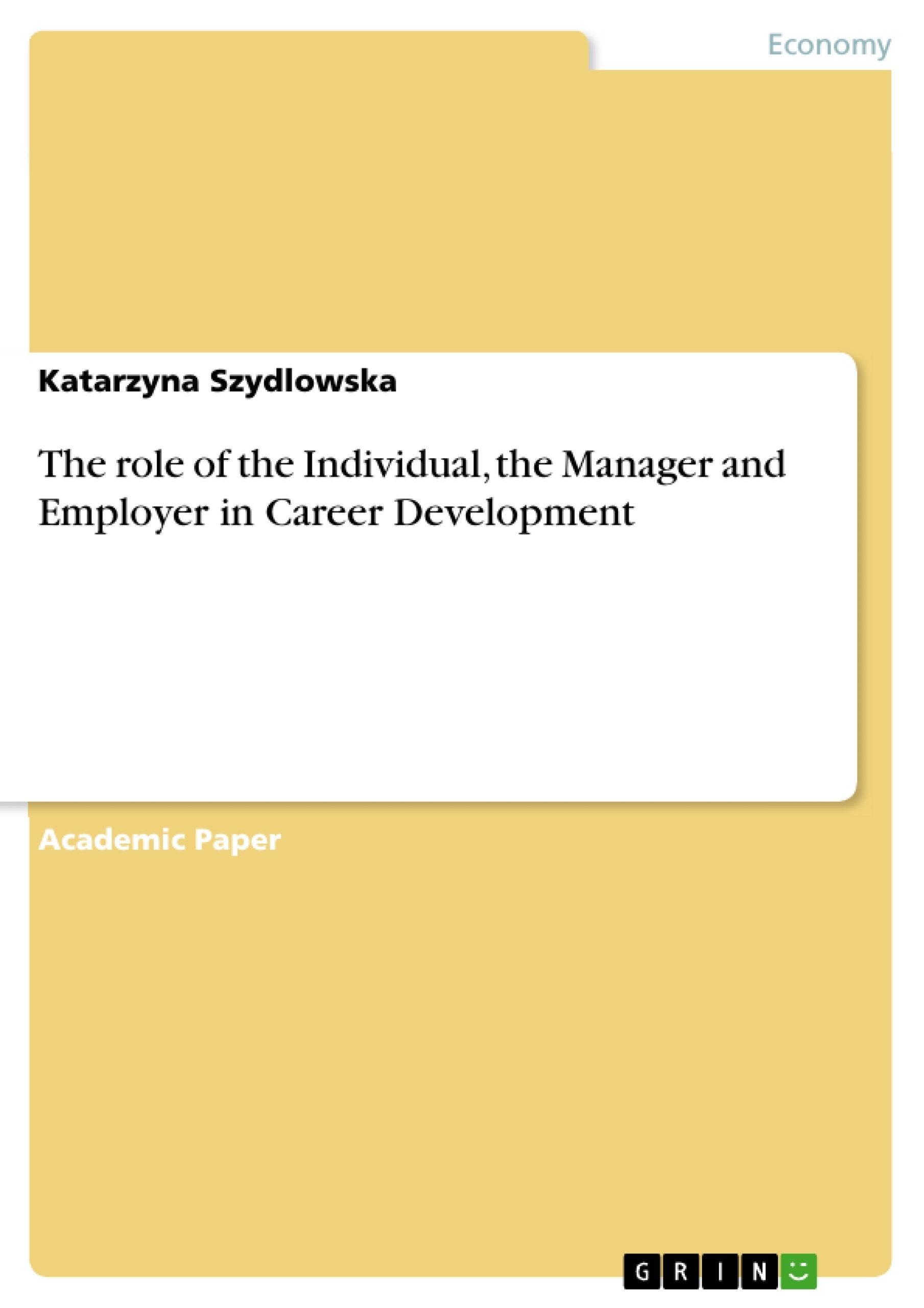This paper will highlight the role of the individual, manager and employer in career development. Firstly, I will explain, what the career development is in general. Secondly, I will emphasize, which abilities and attitude should show an individual and how crucial is the career planning in respect of the development. Furthermore, I will analyse the manager’s role in this process. I will adduce aspects such as commitment, coaching and mentoring, which are essential in manager’s contribution. Moreover, I will stress that role of employee relies on providing with opportunities such as trainings and creating the positive environment. In conclusion, I will emphasize that individual, manager and employer have to collaborate and be cohesive in vison of career development.
Inhaltsverzeichnis (Table of Contents)
- Table of contents
- Executive summary
- Introduction
- The role of the Individual in Career Development
- The role of the Manager in Career Development
- The role of Employer in Career Development
- Conclusion
- References
Zielsetzung und Themenschwerpunkte (Objectives and Key Themes)
This paper aims to analyze the roles of the individual, manager, and employer in career development. It examines the individual's responsibilities in career planning and development, the manager's crucial role in mentoring and coaching, and the employer's contribution in providing opportunities for growth.
- The importance of individual responsibility in career development
- The role of managers as mentors and coaches in employee development
- The significance of employer-provided opportunities for career growth
- The importance of collaboration between individuals, managers, and employers in career development
- The mutual benefits of effective career development for both employees and organizations
Zusammenfassung der Kapitel (Chapter Summaries)
- Introduction: This chapter defines career development as a lifelong and cyclical activity involving all levels of an organization. It highlights the importance of career development for both employees and employers, emphasizing the mutual benefits of a structured approach to growth within the organization.
- The role of the Individual in Career Development: This chapter explores the individual's responsibility in career development, highlighting the importance of self-assessment, career planning, and active engagement in personal growth. It discusses the common disagreement between employers and employees regarding the responsibility for career development and the importance of communication and cooperation in this process.
- The role of the Manager in Career Development: This chapter examines the crucial role of the manager as a mentor and coach in employee development. It emphasizes the importance of coaching skills, commitment, and motivational conversations in driving employee growth. It also explores different coaching models and theories that can be applied in the managerial role.
Schlüsselwörter (Keywords)
This paper focuses on key concepts related to career development, including individual responsibility, managerial roles, employer contributions, career planning, mentoring, coaching, and the mutual benefits of effective career development for both employees and organizations.
- Quote paper
- MBA graduate Katarzyna Szydlowska (Author), 2016, The role of the Individual, the Manager and Employer in Career Development, Munich, GRIN Verlag, https://www.grin.com/document/512510



